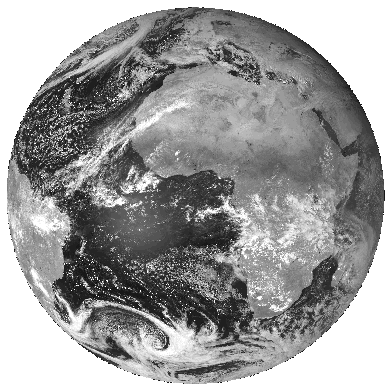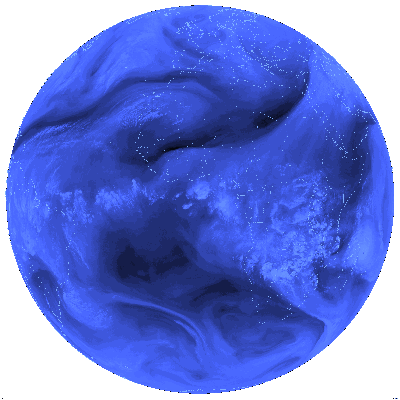1. Light and Radiation
The radiation spectrum (2/3)
The appearance of object can be very diverse in the different spectral ranges of light and radiation. This holds also with the earth observed from space. We saw on page 1 of the module two photographs of the earth, showing the beauty of colours at visible wavelengths. The image below is taken in the near IR at 800 nm (please have a look at the VIS spectrum on the previous page: 800 nm is just beyond the red end) by the meteorological satellite Meteosat-8.

The oceans appear dark since sunlight is more absorbed in water at this wavelength than in the visible. However, scattering in the atmosphere is much reduced, and therefore clouds and land surfaces are reproduced with high contrast.
The earth changes its appearance when observed at even longer wavelenths, i.e. getting deeper into the IR. The next image is taken at 6.2 μm. The earth surface becomes almost invisible! (Contour lines of land are added to the image for orientation only)

The spectral range around 6.2 μm is particularly sensitive to water vapour in the atmosphere. Sunlight is strong in the VIS but rather low in the IR. This low intensity is strongly absorbed by water vapour, making the land and oceans virtually invisible. At the same time water vapour re-emits radiation into space (absorption and emission of radiation are coupled processes which we will investigate more closely in chapter 2). Other atmospheric gases do not contribute to the same extent. Hence, the image depicts the distribution of water vapour which apparently follows large-scale patterns in the atmosphere.
